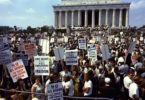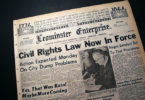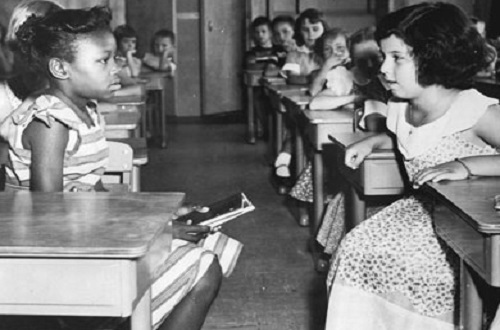
Brown v Board of Education is a landmark case in the African American struggle against segregation in America. In 1954 most schools in the South were racially segregated. In Brown v Board of Education the Supreme Court reversed the 1896 case of Plessy v Ferguson which held that as long as equal facilities are provided for whites and colored people, segregation did not violate the Fourteenth Amendment. Plessy v Ferguson institutionalized discrimination and segregation of the races under what is known as Jim Crow Laws. Brown v Board of Education declared Plessy unconstitutional calling for the desegregation of schools and putting racial equality back into the Constitution.
Five in One and the NAACP
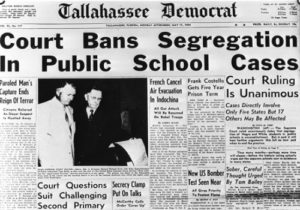
Headline of the Tallahassee Democrat dated May 17, 1954, covers the decision of the Supreme Court over school segregation.
In all cases except for Brown, NAACP Legal Defence Fund lawyers presented evidence that segregated schools and their condition fostered feelings of inferiority and irreparable psychological damage among students. They also prepared evidence that segregated schools were understaffed and underfunded. The Brown case did not present such a case but the inability to attend schools closer to where they lived instead of traveling long distance to go to school. They called for schools to reverse its policy of racial segregation.
Supreme Court’s Decision
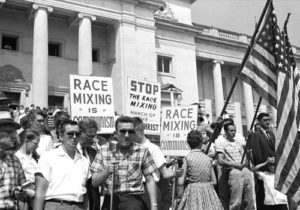
People in the South protesting against the decision of the Supreme Court banning segregation in schools.
The Supreme Court judges unanimously decided to overturn the provisions of 1896 Plessy v. Ferguson which under the Equal Protection Clause violated the Fourteenth Amendment. They sustained that black and white schools are not equal and demanded states to desegregate all public schools “with all deliberate speed”. Chief Justice Earl Warren delivered the Court’s decision:
“We conclude, unanimously, that in the field of public education the doctrine of ‘separate but equal’ has no place. Separate educational facilities are inherently unequal”
Consequences and Southern Manifesto
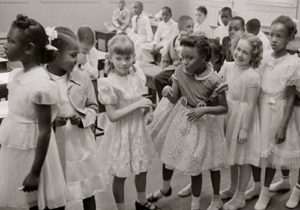
Students at a desegregated school.
Not everybody was happy about the Supreme Court decision. In the Deep South anti-integrationist sentiments emerged. Private schools for all white students were formed staffed with public school teachers, public schools were forced to close and many public schools continued to prohibit African Americans from joining them.
In 1956 politicians from southern states issued the Declaration of Constitutional Principles also known as Southern Manifesto denouncing the Supreme Court’s decision to breach states’ rights and accusing it of abuse of judicial power. The Manifesto was signed 19 senators and 77 members of the House of Representatives from Alabama, Arkansas, Florida, Georgia, Louisiana, Mississippi, North Carolina, South Carolina, Tennessee, Texas and Virginia.
The Manifesto laid the strategy to delay the end of Jim Crow. It would take many years and a many court battles to eliminate the legal barriers that southern states raised to impede integration. In the 1958 Cooper v. Aaron case the Supreme Court held that all states are bound by the Court’s decision and that its interpretation of the Constitution is the “supreme law of the land”.



